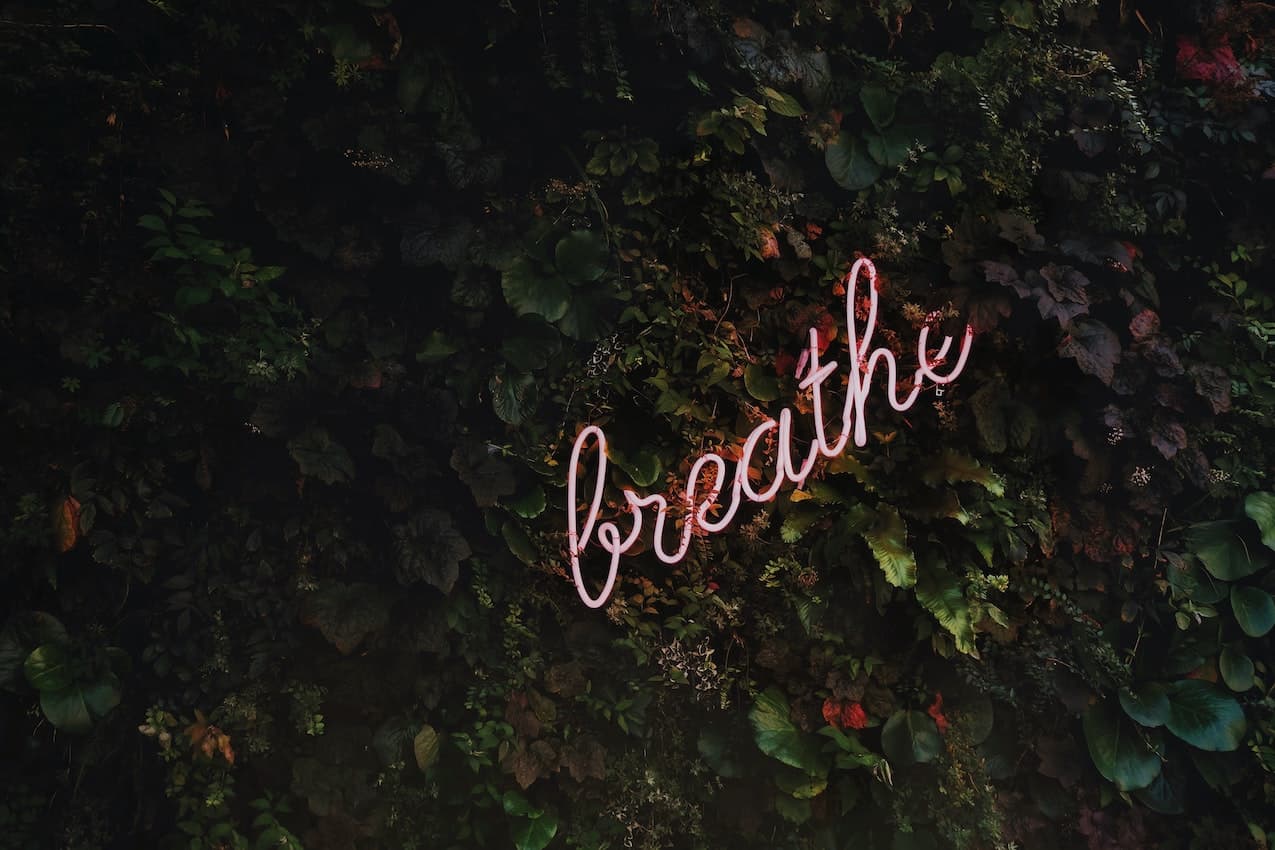Mindfulness and Presence
Coherent Breathing: Overview, Benefits, and Effectiveness
THC Editorial Team September 27, 2022

Contents
- Overview
- What is the Autonomic Nervous System?
- What Is Coherent Breathing?
- Background/History of Coherent Breathing
- How To Do Coherent Breathing
- The Potential Benefits of Coherent Breathing
- The Effectiveness of Coherent Breathing
- Summary/Key Takeaways
Breathing is essential to life. The body self-regulates our breathing cycles subconsciously, with a standard respiration rate averaging between 18 and 20 breaths per minute.1 Stress, adrenaline, and other outside factors can drastically affect our regular respiration rate, sometimes even leading to hyperventilation under situations of extreme stress. Thankfully, we have some control over our breathing rate, and with the practice of coherent breathing, we can influence our body to calm itself down and get back to a more balanced and regular breathing cycle.
What is the Autonomic Nervous System?
The autonomic nervous system comprises the sympathetic nervous system (SNS) and the parasympathetic nervous system (PNS). The SNS responds to perceived danger. It increases heart rate and blood pressure to prepare the body for the fight-or-flight response or causes the body to collapse in a freeze response.2,3 The PNS brings the body back to homeostasis by calming the body and lowering the heart rate and blood pressure.2,3 Traumatic experiences can damage the nervous systems and cause conditions like complex posttraumatic stress disorder (C-PTSD) and anxiety disorders.2,3
What Is Coherent Breathing?
Coherent breathing is a technique in which a person intentionally controls their breathing rate to help relax and calm their body, regulate their heart rate, and remove themself from a fight-or-flight response or adrenaline spike. The primary goal of coherent breathing is to increase the length of each breath, in turn sending signals to your brain to slow down your heart rate. Coherent breathing may be incorporated into various exercises, like yoga, weightlifting, running, and other rigorous activities, to help control one’s heart rate. It may also be combined with relaxation techniques like meditation, where focusing on one’s breathing cannot only help calm their heart rate but also help block out outside stimuli.
According to Stephen Elliott, founder of the coherent breathing method, “Fundamentally, coherent breathing leads the breather to inhale and exhale synchronously at their resonant rate, in combination with conscious relaxation, to facilitate wave action in the body. Resonant coherent wave action depends on both breathing and relaxation.”4 According to Elliott, when breathing is coherent, it influences the heart rate variability (HRV) cycle, which tends to synchronize with the breath.5
Background/History of Coherent Breathing
Developed by Stephen Elliott, an engineer and scientist, in the early 2000s, coherent breathing initially focused on the “respiratory arterial pressure wave” and its relationship with HRV.4 The goal is to consciously adjust your breathing cycle to about five breaths per minute instead of the normal higher rate of breaths per minute. This can help regulate the sympathetic and parasympathetic nervous responses, which regulate your heart rate via the atrioventricular node, commonly known as the heart’s pacemaker. It’s important to note that the technique focuses only on the timing of each breath, adjusting the duration and rhythm of the inhalation and exhalation cycles, and not necessarily on the volume of each breath. Your body will automatically adjust the volume of each breath as you focus on the timing. The slower and higher volume breaths signal to the brain that the body should be more relaxed, settling the sympathetic nervous system and shifting more toward parasympathetic control.6
How To Do Coherent Breathing
Although performing coherent breathing techniques is simple on the surface, it does require some thought and conscious effort to regulate your breathing properly and to breathe properly.
The coherent breathing protocol involves the following guidelines:7
- Breathing should occur at a rate of five breaths per minute. The intent is for each inhalation and exhalation cycle to last 6 seconds each, for a total of 12 seconds per breath.
- The motion of the diaphragm during breathing should have a particular curve, referred to as sinusoidal, similar to a pendulum motion.7
- This breathing pattern should coincide with conscious relaxation of the six bridges, which include the head and face, throat and tongue, hands, diaphragm, pelvic floor, and feet.
- This technique should be practiced for 20 minutes per day for 21 days.
- Eventually, the person should learn to dwell in the state of coherent breathing.
The Potential Benefits of Coherent Breathing
Breathwork researcher Wilfried Ehrmann believes coherent breathing can be a tool that helps solve many of the maladies of the body and soul.5
There are several benefits of and uses for coherent breathing techniques. Its primary benefits may be activating the body’s natural relaxation response, reducing stress, improving mood, increasing cardiovascular wellness and HRV, reducing anxiety, and increasing overall health. Coherent breathing techniques are also used to help train individuals with dysfunctional breathing patterns or who have chronic shallow breathing to help fully utilize their diaphragm and break the habit of breathing from the chest rather than taking full deep breaths.
The Effectiveness of Coherent Breathing
Certain mental health conditions, such as major depressive disorder (MDD), are associated with low heart rate variability (HRV).8,9 Slow-paced breathing practices have been suggested to improve mood and increase HRV.9,10 In individuals with MDD, resonant breathing has been shown to increase HRV and enhance mood.9,11 Resonant breathing has been described as “coherent breathing with pursed lips resistive exhalation.”9 Further studies have shown positive outcomes from using coherent breathing techniques and yoga in treating MDD by measuring certain neurotransmitter levels in the brain.12
Coherent breathing and other breathing techniques have also been shown to affect brain activity, specifically in the prefrontal cortex, insula, hippocampus, and amygdala.13
In a 2012 study of 37 undergraduate college students, participants were randomly assigned to a coherent breathing group, a meditation group, and a reading group as a control group. The study showed that participants in both intervention groups experienced reduced stress and anxiety levels and an increase in overall wellness compared to the control group.14
Research on the effectiveness and utilization of coherent breathing is still ongoing. In many cases, studies combine coherent breathing with other activities and exercises to test its effectiveness in treating stress, anxiety, and depressive disorders; to determine its overall effects on mood; to measure its effects on the balance between the sympathetic and parasympathetic nervous responses of the autonomic nervous system; and to assess how much conscious control people can maintain over these normally automatic responses using breathing techniques and conscious regulation, such as coherent breathing.
Summary/Key Takeaways
Coherent breathing, while limited in supportive research, may be a helpful technique to enhance one’s mental and physical health and a worthy addition to one’s complementary health and wellness tool kit.











